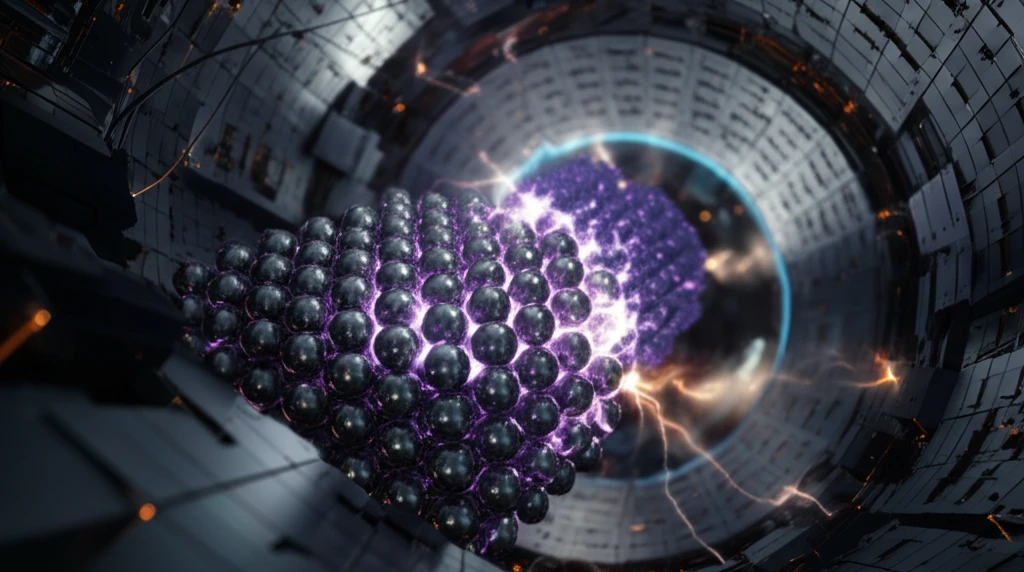
Tungsten's Breaking Point: New Insights into Hydrogen Embrittlement
"Nanoindentation tests reveal how deuterium plasma exposure affects the mechanical properties of tungsten, offering critical insights for fusion energy applications and material science. Embrittlement may be improved by material exposure time."
Tungsten (W) stands as a pivotal material in the construction of ITER's divertor, a component vital for handling extreme heat and particle fluxes within fusion reactors. Its selection is primarily due to its remarkable thermal conductivity, exceptionally high melting point, and minimal erosion rate. These properties make tungsten an ideal candidate for withstanding the intense conditions inside a fusion reactor, where temperatures can soar to millions of degrees Celsius.
Another critical advantage of tungsten is its low tritium retention. Tritium, a radioactive isotope of hydrogen, poses safety and operational challenges in fusion reactors. Tungsten's ability to limit the absorption and retention of tritium is essential for maintaining the safety and efficiency of fusion operations, reducing the risk of radioactive leaks and simplifying waste management.
However, experiments have revealed that under severe loading conditions, such as exposure to high fluxes of deuterium, helium, and neutron particles, tungsten can undergo significant surface modifications. These alterations can lead to a dramatic degradation of the material's thermal and mechanical properties, potentially compromising its structural integrity and performance within the reactor. Recent studies using linear plasma devices to expose tungsten to deuterium under transient heat loads have shown severe surface damage, underscoring the impact of hydrogen embrittlement on tungsten.
Unveiling the Effects of Deuterium Plasma on Tungsten

Hydrogen embrittlement is a well-recognized phenomenon that affects many metals, where the presence of hydrogen can reduce strength and ductility, increasing the likelihood of failure. While extensively studied in materials like steel, the effects of hydrogen embrittlement on tungsten in hydrogen-rich environments have not been as thoroughly investigated. Recent research has begun to focus on how deuterium plasma exposure affects the mechanical properties of tungsten, employing nanoindentation techniques to probe near-surface changes.
- A decrease in the pop-in load, indicating easier dislocation nucleation.
- An increase in hardness in the exposed tungsten sample.
- Grain orientation had no significant impact on the pop-in load.
- After a desorption time of 168 hours, both pop-in load and hardness began to revert towards the reference state.
Implications and Future Directions
This research provides critical insights into the effects of deuterium plasma on the mechanical properties of tungsten, a key material in fusion reactors. Understanding these effects is vital for predicting the long-term performance and durability of tungsten components in fusion environments. The observed recovery of mechanical properties after extended desorption times suggests that the impact of deuterium exposure under these conditions may not cause irreversible damage, providing a glimmer of hope for mitigating embrittlement. Future studies should focus on exploring these mechanisms in greater detail and developing strategies to enhance the resistance of tungsten to hydrogen embrittlement, ensuring the reliable operation of fusion reactors.
